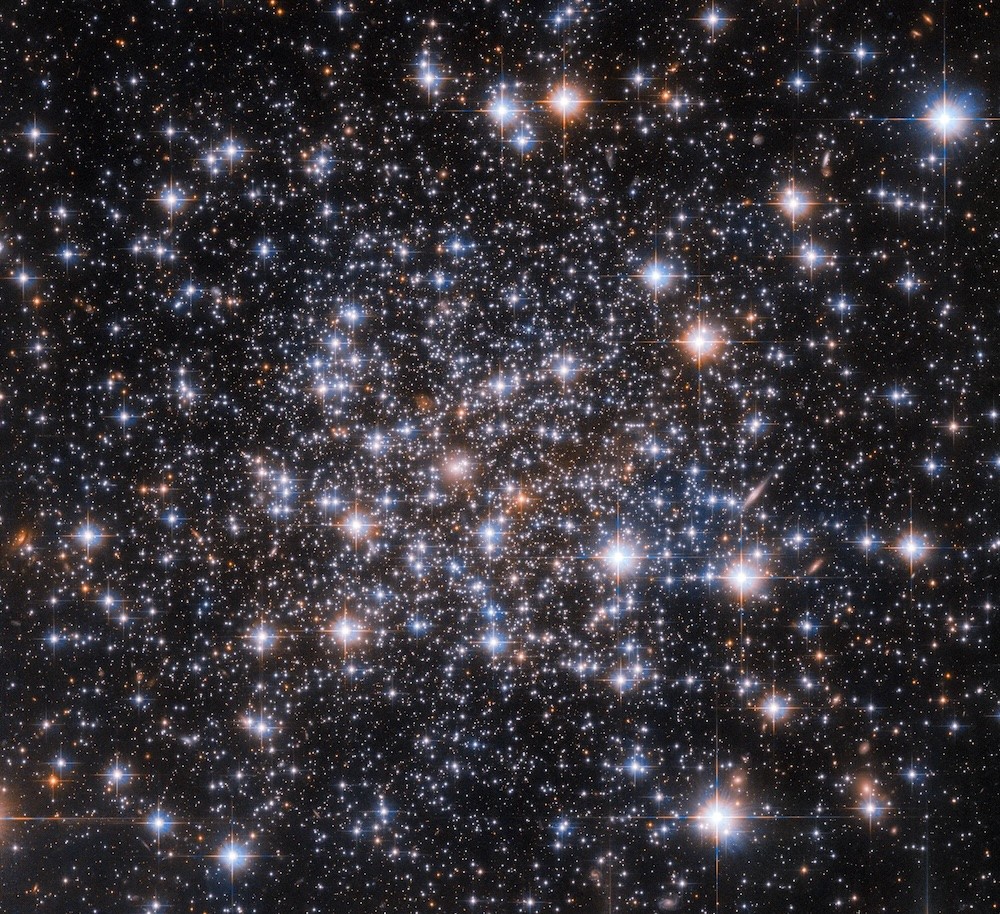A Star Passed Through the Oort Cloud Less Than 500,000 Years Ago. It Wasn’t the Only One.
By Carolyn Collins Petersen
As stars in the Milky Way move through space, some of them have an unexpected effect on the Solar System. Over time, one comes closer to the Sun during its orbit in the galaxy. Some of them actually get within a light-year of our star and pass through the Oort Cloud. Such close flybys can affect the orbits of the outer planets and send cometary nuclei on a long inward rush to the Sun.
Astronomer Igor Yu Potemine at the Université Paul Sabatier in France, and his colleagues decided to look for likely “close-passing” stars and so-called “Nemesis” stars. Their tool was the SIMBAD database, which contains updated stellar parallaxes and proper motions from ESA’s Gaia satellite. They found a number of possible candidates. These stars drifted through the outer Oort Cloud and then went back out to interstellar space. Their actions set off gravitational perturbations responsible for cometary visits to the inner Solar System over the past billions of years. It’s important to note that gravitational influences from the giant planets, as well as something called the “Galactic tide” can also perturb objects in the Oort Cloud. For purposes of his study, Potemine restricted his search to nearby stars as candidates for Oort Cloud disturbances.
Stars and the Oort Cloud Region
When we look at which stars could cause a comet swarm from the Oort Cloud region, a couple of types of stellar candidates come to mind. The first is what some researchers call a “Nemesis” star. That’s the name for a still-theoretical companion star to the Sun. It’s thought to be a dwarf star that occasionally (like every 25-30 million years) passes too close to the Sun. That action sends a swarm of comets to the inner solar system. Astronomers continue to look for candidates for this solar Nemesis, although the search hasn’t identified “the one” as yet. They also look for other stars that periodically get too close to the Solar System and even pass through the inner regions of the Oort Cloud.

The Oort Cloud/outer solar system region is a still-largely unknown place. It’s not one monolithic cloud but several regions with populations of icy cometary bodies. The outer edge of the region could extend out 3.2 light-years away from the Sun. Inside the Oort Cloud is the Kuiper Belt, which also contains cometary bodies and a population of small worlds such as Pluto, Eris, Makemake, and others. There’s also a sort of intermediate population of cometary objects thought to exist between the Oort cloud and the Kuiper Belt, sometimes referred to as the Hills Cloud. This region may be populated with many more cometary nuclei than the actual Oort Cloud. So, there’s plenty of material “out there” for passing stars to perturb, and it’s likely many have in the billions of years that the Solar System has existed.
Typically, you can expect a star to pass through (or near) the Oort Cloud every hundred thousand years. Very close flybys (like within 52,000 AU, happen more rarely—about every nine million years. So, it’s a fairly regular occurrence in the long history of the Solar System. The star’s motion sets off gravitational disturbances that eventually jostle cometary nuclei out of their orbits in the cloud. These “long period” comets (named because of their extraordinarily lengthy orbits) eventually pass by the Sun and then head back out to the depths of the outer Solar System. The ones with the lengthiest orbits have only been recorded once or twice in human history. That’s because some orbits can be thousands of years long.
Lists of Likely Flyby Candidates
Patomine came up with several lists of likely “transgressor stars” from the SIMBAD search. Some are the so-called “Nemesis” objects and others are stars that have come closest to the Sun (within a light-year). Further research needs to be done to establish precise orbits and proper motions for all of the candidates. But, it’s interesting to look at a few of them in more detail.

One of the Nemesis candidates is Scholz’s star. It’s a red dwarf, and likely grazed the edge of the Oort Cloud some 70,000 years ago, along with a companion brown dwarf. Currently, it’s about 22 light-years from the Sun and probably stirred up a swarm of comets that won’t get to the inner solar system for more than a million years. It’s also likely that its passage affected the orbits of Kuiper Belt objects. Others have also been studied, including the G-type star HD 7977. It’s currently about 247 light-years from Earth and made its close flyby some 2.8 million years ago.
Of course, there aren’t just past encounters to calculate. Other stars will come near in the future. One of the best-known examples of a close future passage is the star Gliese 710. It will fly past the Sun in about 1.29 million years at a distance of around 10,520 AU. It has a very good chance of passing through the Oort Cloud, which means it could very well perturb the Oort Cloud. That would send showers of comets toward the Sun for millions of years. Some researchers estimate it could result in about 10 naked-eye comets per year. Far from being a search for comets of the past, the hunt for stars passing close to the Sun could also predict an interesting future for observers on Earth thousands or millions of years from now.
For More Information
Stellar flybies within 1 ly from the Sun and stars passing through the Hills cloud
Gliese 710 Will Pass the Sun Even Closer
The post A Star Passed Through the Oort Cloud Less Than 500,000 Years Ago. It Wasn’t the Only One. appeared first on Universe Today.

February 24, 2024 at 04:35AM
via Universe Today read more...

Post a Comment